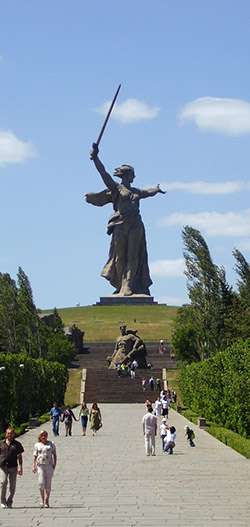
Volgograd Motherland is in good condition
 |
The monument is located on the western edge of the city at the site of the brutal battles of the Stalingrad battle from 1942-43, a key event of World War II on the Eastern Front. The statue, which is 85 meters tall, is unique not only for its size but also because it is not attached to the pedestal in any way - it rests on it under its own weight of 8,000 tons.
The Stalingrad battle monument was visited today by Volgograd governor Anatoly Brovko with a group of experts. According to the RIA Novosti agency, he reportedly confirmed that Mother Homeland is in good condition and is not in any danger of collapse. Experts took thirty samples from the concrete mass, and the analysis showed that the condition of the statue corresponds to its age. "There are no serious problems, just growth issues," stated the head of the expert group, Gennady Mashbik.
Experts are more concerned about the water, which is dangerously approaching its foundations, than the monument itself. The level of groundwater has sharply increased recently due to worn drainage. Its level, as well as the composition of the water, must be carefully monitored by devices that experts have placed in twenty deep wells. Experts consider the construction of an entirely new drainage system to be unavoidable.
Mother Homeland stands firmly on its pedestal, does not sway, its reinforced concrete interior does not rust, and the concrete surface does not crumble. A detailed expertise will be completed only next year in February.
The English translation is powered by AI tool. Switch to Czech to view the original text source.
0 comments
add comment






